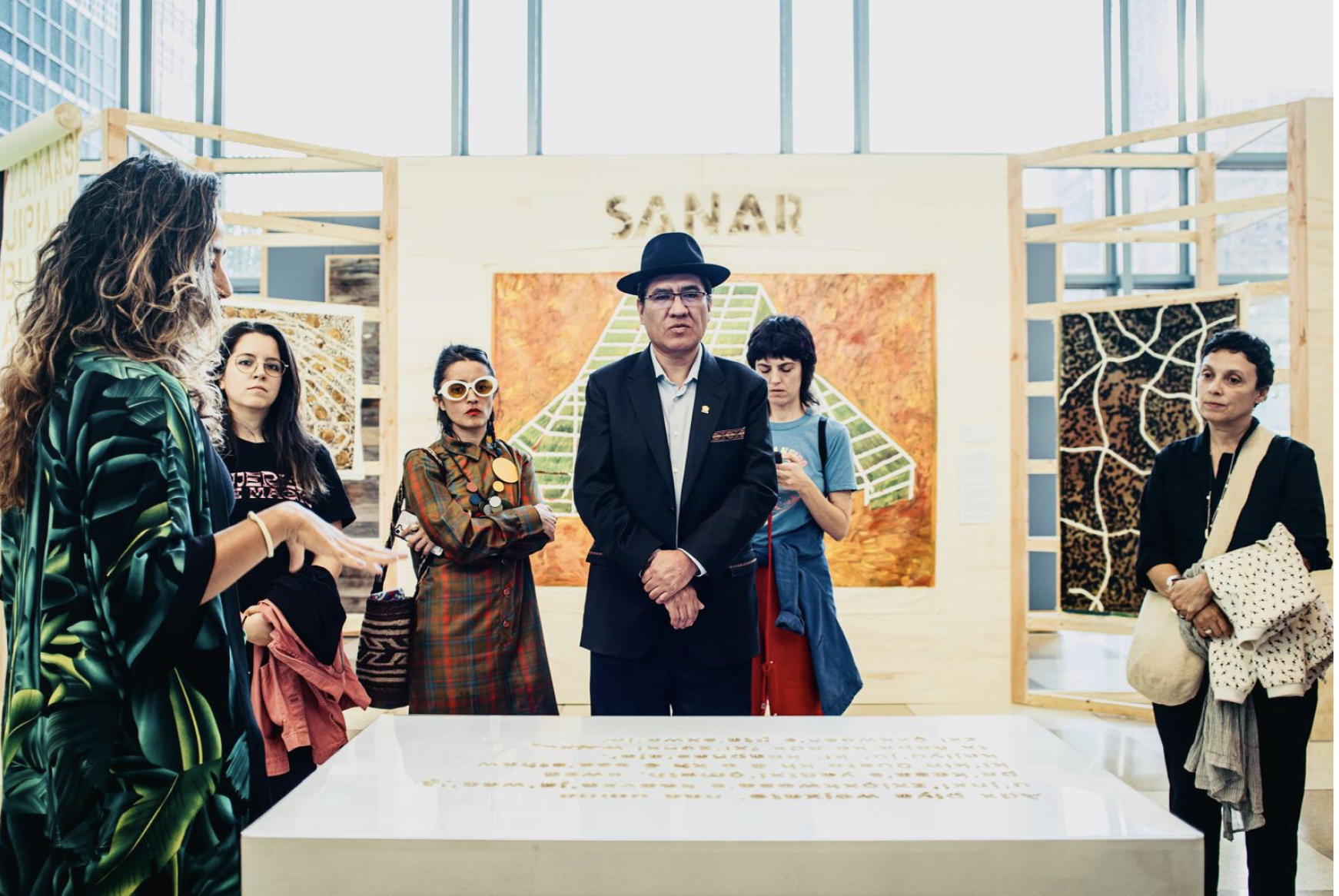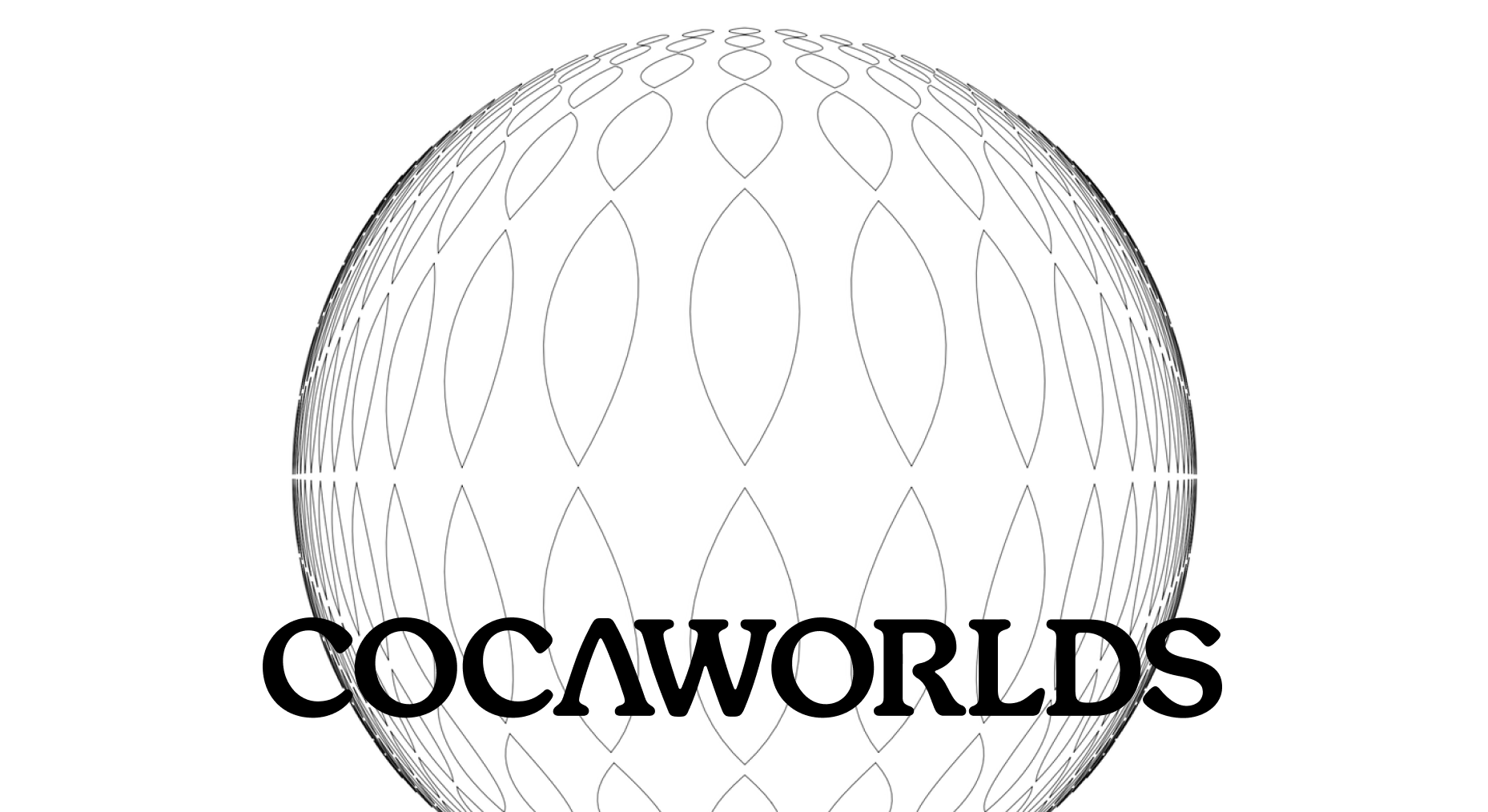


Coca, Palabra-Mundo at the UN. /Photos: Mariana Reyes, Alejandro Neira y Alejandro Jaramillo ︎︎︎
This curatorial research project seeks to highlight the coca plant's mystical, political, medicinal, and nutritional value through contemporary art.
COCA, PALABRA-MUNDO AT THE UN
Curators: Liana, a curatorial research collective formed by Colombian artists and researchers Angélica Cuevas (Medellín, 1988), Juan Pablo Caicedo Torres (Bogotá, 1991) and Giselly Mejía (Támesis, 1990).
Artists: Tatiana Arocha, Pajarita Caucana (Daniela Rubio, Maria Alejandra Torres and Mónica Suárez), Aimema Uai, Sandra Díaz, Andrés Domínguez, Estefanía García Pineda, Miguel Ángel Rojas, Edinson Quiñones, Anyi Ballesteros (Agroarte), NOMASMETAFORAS (Julián Dupont and Clara Melniczuk) with Consejo de Mayores del Territorio Ancestral Kweth Kina & Consejo de Mayores UAIIN-CRIC, Ximena Garrido-Lecca, and Ricardo Cortés.
My role: Curator, researcher, educator, strategic communicator, and producer.
Language: Spanish and English.
Year: November, 2024
![]()
Curators: Liana, a curatorial research collective formed by Colombian artists and researchers Angélica Cuevas (Medellín, 1988), Juan Pablo Caicedo Torres (Bogotá, 1991) and Giselly Mejía (Támesis, 1990).
Artists: Tatiana Arocha, Pajarita Caucana (Daniela Rubio, Maria Alejandra Torres and Mónica Suárez), Aimema Uai, Sandra Díaz, Andrés Domínguez, Estefanía García Pineda, Miguel Ángel Rojas, Edinson Quiñones, Anyi Ballesteros (Agroarte), NOMASMETAFORAS (Julián Dupont and Clara Melniczuk) with Consejo de Mayores del Territorio Ancestral Kweth Kina & Consejo de Mayores UAIIN-CRIC, Ximena Garrido-Lecca, and Ricardo Cortés.
My role: Curator, researcher, educator, strategic communicator, and producer.
Language: Spanish and English.
Year: November, 2024

In the summer of 2024, we decided to work with the Government of Colombia on the realization of Coca, Palabra-Mundo, an exhibition co-sponsored by the Mission of Bolivia to the United Nations and financed by the Open Society Foundations. The exhibition was held at the United Nations Headquarters in New York from November 3 to 8, 2024.
The show invited the international community to reflect on the benefits of the coca plant for Indigenous and peasant communities and to question the historical mistake made by the United Nations in 1961 when it classified coca as a narcotic.
For over 8,000 years, the coca leaf has been an integral part of the life and cultures of Indigenous and peasant communities in the Andean-Amazonian region. However, this sacred plant has been stigmatized and criminalized internationally by being equated with cocaine. The 1961 Single Convention on Narcotic Drugs listed the coca leaf as a narcotic, which led to decades of public policies focused on persecuting both the plant and the communities that rely on it. This historical and colonial error has caused immense harm to millions of people, fragmented entire communities, and resulted in irreversible environmental damage.
Coca, Palabra-Mundo sought to challenge and shift the negative perceptions surrounding coca, reclaiming the right of Indigenous and peasant communities to use this sacred plant. More than a symbol of life, health, and spirituality, coca is a profound source of identity, knowledge, and connection for millions in South America. The exhibition invited visitors to reflect on the historical biases that have demonized coca and highlighted the urgent need to correct a deeply entrenched misunderstanding with far-reaching consequences.
The exhibition featured the work of eight artists, many of whom were born or work in regions where coca cultivation is integral to the local culture and economy. Their pieces offer both ancestral and contemporary perspectives, shaped by their personal histories and the experiences of the Indigenous communities with whom they are connected. In these works, coca is portrayed as a being with agency—an element that facilitates communication, political organization, and harmony within communities and territories.
The show invited the international community to reflect on the benefits of the coca plant for Indigenous and peasant communities and to question the historical mistake made by the United Nations in 1961 when it classified coca as a narcotic.
For over 8,000 years, the coca leaf has been an integral part of the life and cultures of Indigenous and peasant communities in the Andean-Amazonian region. However, this sacred plant has been stigmatized and criminalized internationally by being equated with cocaine. The 1961 Single Convention on Narcotic Drugs listed the coca leaf as a narcotic, which led to decades of public policies focused on persecuting both the plant and the communities that rely on it. This historical and colonial error has caused immense harm to millions of people, fragmented entire communities, and resulted in irreversible environmental damage.
Coca, Palabra-Mundo sought to challenge and shift the negative perceptions surrounding coca, reclaiming the right of Indigenous and peasant communities to use this sacred plant. More than a symbol of life, health, and spirituality, coca is a profound source of identity, knowledge, and connection for millions in South America. The exhibition invited visitors to reflect on the historical biases that have demonized coca and highlighted the urgent need to correct a deeply entrenched misunderstanding with far-reaching consequences.
The exhibition featured the work of eight artists, many of whom were born or work in regions where coca cultivation is integral to the local culture and economy. Their pieces offer both ancestral and contemporary perspectives, shaped by their personal histories and the experiences of the Indigenous communities with whom they are connected. In these works, coca is portrayed as a being with agency—an element that facilitates communication, political organization, and harmony within communities and territories.










Coca, Palabra-Mundo at the UN. /Photos: Mariana Reyes, Alejandro Neira y Alejandro Jaramillo ︎︎︎
Public Programming:
- Guided Tours at the United Nations:
A bilingual (Spanish and English) tour led by the curators, offering deeper insights into the themes of the exhibition and the significance of coca. - Panel Discussion at the UN: Beyond Declassification – Detoxifying Narratives Around the Coca Plant:
A conversation to challenge the hegemonic negative connotations associated with coca, which have persisted for decades due to misinformation and prejudice, and continue to fuel violence and injustice across South America. - Dialogue with Colombian Artists – Art, Coca, and Drug Policies:
A discussion with Colombian artists who use the coca leaf as a medium to transform drug policies and reshape the narratives surrounding drugs. - Screening – Coca Vision:
A screening of a photographic series and two video art pieces created by artists featured in the exhibition. The screening was followed by a conversation reflecting on the themes and concepts explored in their works. - Coca Watercolor Workshop: Tinta Dulce – Poetics of the Future:
A hands-on watercolor workshop using coca-based inks, led by the Colombian collective Ginger Blonde and curator Giselly Mejía. This workshop invited participants to imagine and illustrate potential futures for the coca plant, exploring its cultural significance and transformative potential.
After its presentation at the United Nations, the exhibition was hosted at the Open Society Foundations headquarters in New York from November 11, 2024, to January 15, 2025.